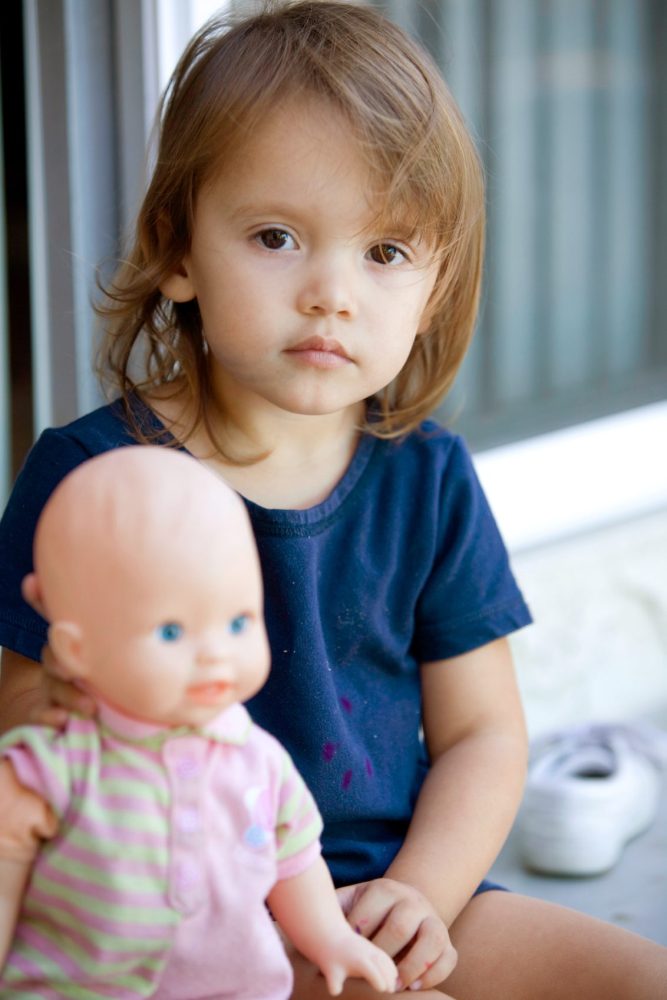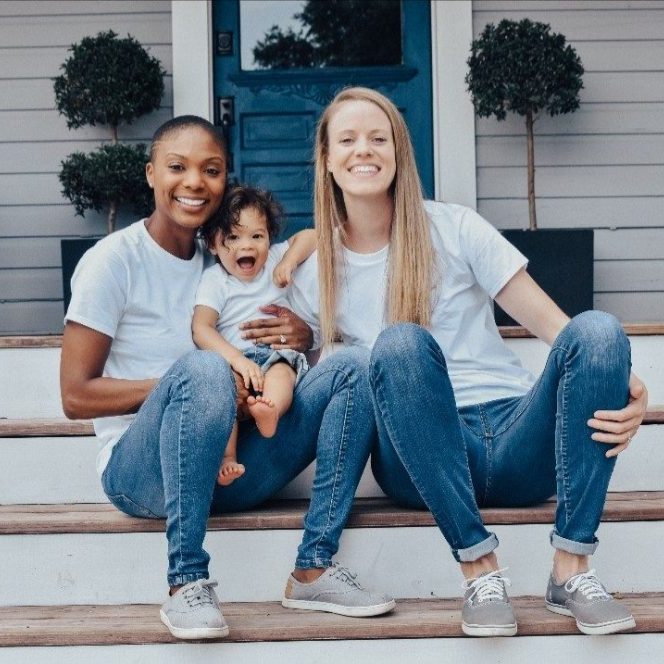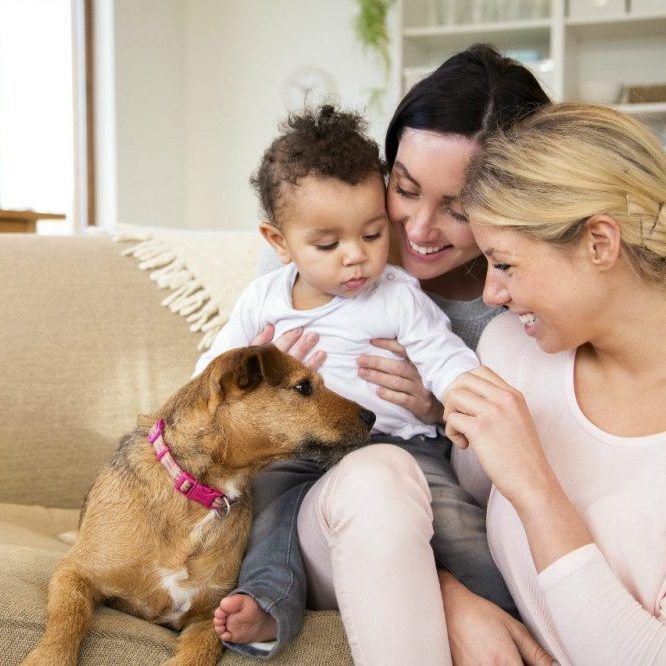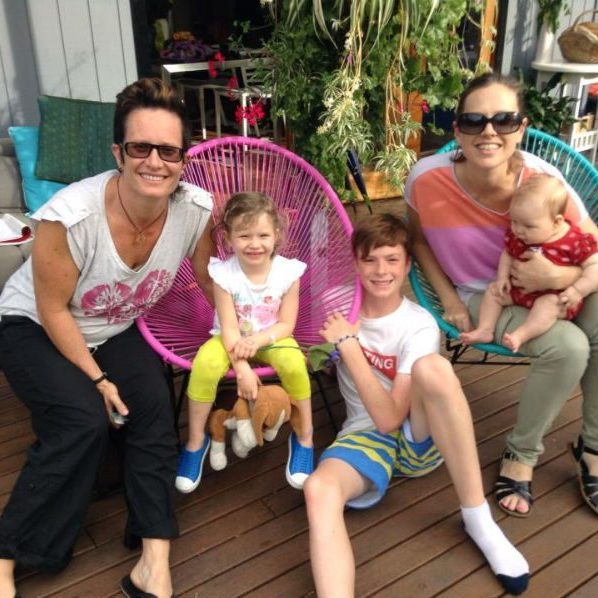 One lesbian mom struggles to teach her kids that gender is a spectrum, despite the best efforts of toymakers.
One lesbian mom struggles to teach her kids that gender is a spectrum, despite the best efforts of toymakers.
I was having a “mood” recently—my wife was out of town, the Oregon monsoon season had kept the kids and me cooped up and cooking for them in that state seemed like a really bad idea, something that could end with me going out for beer and cigarettes and never coming back. So we went to Burger King instead. Not the best nutritional choice, but less damaging than reckless abandonment. When I’d spit out my order, including the kid’s meal for the 6-year-old, the voice from the drive-through speaker asked, “Would you like the girl toy or the boy toy?”
I couldn’t swear (because there were kids in the car), but I might have launched into an oration on the dual-gender system, stereotyping and compulsory heterosexuality if it had just been the teenagers with me. They’ve heard it all before. So I asked for the truck instead of the doll, refusing to assign a gender to a toy.
It’s been like that lately—I’ve encountered a barrage of toy-based bias while searching for our little guy’s birthday presents online. I’ve been shopping at Amazon instead of Target because searching by gender is only one of the dozens of ways to find a toy on Amazon’s site, while at Target.com, boy versus girl is first on the list. But even at Amazon, I saw pink-bucket Tinker Toys and Legos labelled “designed especially for girls,” and realized the world hasn’t changed as much as I hoped.
I’d been so oblivious—living in our liberal bubble, shopping at independent toy stores that wouldn’t dare assign gender to a toy for fear of being mobbed by tattooed vegans carrying pitchforks and flaming tiki torches. I’m part of a community whose parents brag about schools where boys feel free to wear pink and two-mom families are as common as dirt. And it seemed like our older kids came out of the womb shunning stereotypes, suspicious of commercials and questioning authority. They think gender stereotyping is stupid.
Our daughter is particularly livid on this issue, probably because she was deluged with dolls between the ages of 1 and 4 when she discreetly disavowed any interest in humanlike playthings and shoved the offending toys into a plastic bin under her bed. She was also the reluctant recipient of three tea sets, two doll strollers, several Barbies and a boatload of ice cream-coloured plastic food, which later became a popular item to pelt other kids with.
Our older son suffered the usual tunnel vision of the adults around him with good grace, never really that into the cars, sports equipment or various aggressive action figures that showed up on birthdays or Christmas. To be fair, he wasn’t all that into the dolls we gave him when he was little either, and he never “played house”—he was too busy constructing life-size rainforests out of cut paper to worry about domestic chores.
But it was obvious to us before any of them were born that most store-bought toys are sociological tools—my wife’s disappointment when her little brother got the Big Wheel she’d been begging for is imbedded permanently in her brain. Toys are intended to cement traditional gender roles and homogenize American youth. My wife and I try not to be rude about this at birthday parties, skipping speeches on stereotypes or pointing the finger of blame at anyone for supporting gender polarity. We taught our kids that it’s the thought that counts (the one about pleasing the recipient, not the one chanting “conform, conform, conform”) and that exchanging later is OK.
Because parents are the main influence on how much impact gendered toys have on kids, the real question is, do the parents talk about who can play with a toy and how it is played with? Not surprisingly, in my experience, the only discernible difference between kids raised by same-sex parents and heterosexual parents is that one group is more open-minded about lifestyles, blamed by some on our refusal to buy gender-specified toys or insist on “gender-appropriate” play. (Who knew open-mindedness was such a bad thing?)
Our literal, littlest boy is prey to any and all clever commercials. He is one of the reasons we are so glad we turned off the TV years ago. At Grandma’s house, he sees advertisements persuading him that every boy needs an all-terrain RC and camouflage commando gear to make his life complete. We must detox him after every visit and dispute the stereotypes he comes home spouting, assuring him that girls like Bob the Builder, too, and boys do play dress-up.
But only a cruel person continues to supply unwanted playthings in an effort to influence a child, and there are toys in our house I never thought we’d see—our non-truck-craving, rainforest boy has become a Nerf-gun toting, the violent-videogame player who wants world peace, and my Internet searches that rainy day was for Lego robotic warriors wielding laser swords to add to our little guy’s collection.
Hopefully, by the time our three kids are socially conscious adult consumers, gender will be acknowledged as a wide spectrum, and toys will be available in a variety of colours for kids to choose from, without having to buy into sickly-sweet or testosterone-fueled visions of childhood or drink the Kool-Aid, to get the toy.






